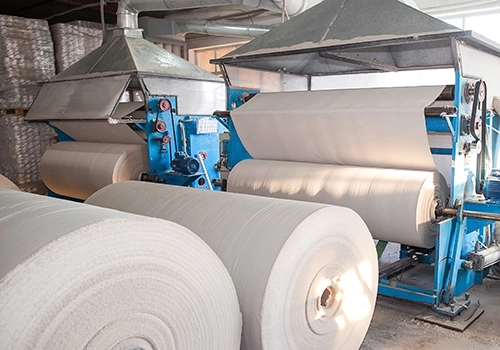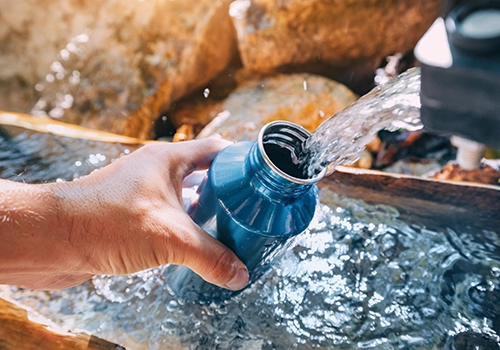Pace® At The Forefront In Dioxins And Furans Testing Services
Pace® is at the forefront of dioxins/furans testing, having served the evolving dioxin testing market for many years. Our highly skilled scientific staff employs the latest instrumentation and adheres to United States Environmental Protection Agency (EPA) methodologies to conduct dioxins/furans and dioxin-like compounds testing on any matrix. Here are some ways we have established ourselves as leaders in the field of dioxin/furan testing services.
- Member of the inaugural class of labs to receive NELAP accreditation and maintain an on-going collaborative relationship with the organization.
- ISO 17025 Certified to meet the stringent requirements of the European Union for laboratories accredited to test food and animal feed for dioxins/furans and/or PCB Congeners.
- Department of Defense Quality Systems Manual version 5.3 accreditation
- Certified to perform work in every state with a formal Dioxin Testing Certifications Program
- Matrices including food, animal feed, and stack emissions
- Analysis of emerging dioxin-like compounds
- Data of unparalleled defensibility for high-importance litigation and remediation projects

Dioxins and furans, otherwise known as polychlorinated dibenzo-p-dioxins and polychlorinated dibenzofurans, are a group of primarily anthropogenic chemical compounds created as an unintended byproduct of several human activities including combustion, certain types of chemical manufacture, chlorine bleaching of paper, and other industrial processes. They can be found in air, water, and soil, are difficult to remediate, and can remain in the environment for an extended period. Therefore, it is crucial to address them during site assessment and cleanup.
Dioxins and furans are byproducts that are generated unintentionally during various processes, including the production of herbicides, as well as in the pulp and paper industry during the bleaching of wood pulp. Burning of products can also lead to their formation. They do not serve any useful purpose in themselves.
Consuming contaminated food is the primary source of exposure to dioxins and furans. These harmful substances tend to accumulate in the fatty tissues of animals, meaning that beef, pork, poultry, fish, and dairy products can all be sources of exposure.
There are several ways in which dioxins and furans can be encountered in the environment, including working in or near municipal solid waste incinerators, copper smelters, cement kilns, or coal-fired power plants. Burning household waste or wood can also lead to exposure, and even forest fires can produce small amounts of these substances.
Dioxins and furans have been detected in the air, soil, and food, with airborne transmission being the primary distribution method, albeit accounting for a relatively small percentage of exposure.
Dioxins and furans are persistent organic pollutants that do not break down in the environment and can bioaccumulate in the food chain. Due to their ability to accumulate in biological tissues, these compounds have been a focus of environmental concerns for many years and are currently under the scrutiny of the global food community.
Among the 210 dioxins and furans, 2,3,7,8-tetrachlorodibenzo-p-dioxin (TCDD) is the most toxic synthetic substance and one of the most toxic naturally occurring compound known to man. Therefore, its high acute toxicity is a significant concern that cannot be ignored.
DIOXIN-LIKE COMPOUNDS ANALYSIS: PCBs AND PBDEs
Research conducted by the EPA and the World Health Organization (WHO) has identified compounds similar in nature to dioxin, which appear to pose similar risks to both animals and humans.
POLYCHLORINATED BIPHENYLS (PCBs)
Polychlorinated Biphenyls (PCBs) are one such family of dioxin-like compounds where increasingly lower detection limits are being sought to better characterize the associated health risks. Advances in instrumentation and method development make it possible to accurately quantify these contaminants at previously unreachable levels. Pace® offers EPA Methods1668A and C for analysis of 209 PCB Congeners including the 12 dioxin-like congeners on the WHO list that have similar toxic effects.
POLYBROMINATED DIPHENYL ETHERS (PBDEs)
There is a growing concern regarding a group of compounds called Polybrominated Diphenyl Ethers (PBDEs), which are commonly used as flame retardants in various household items like carpet, fabric, seating foam, and electrical components. Recent research has revealed that PBDEs are persistent, easily accumulated in the body, and have been associated with adverse health effects on animals.
Contact Us to learn more
How Are Dioxins/Furans Regulated?
Dioxins are covered by a wide range of state and federal regulations. Below is a list of the primary federal programs.
CERCLA, also known as Superfund, gives the EPA broad authority to respond directly to actual or threatened releases of hazardous substances. At Superfund sites, Toxicity Equivalence Factors (TEFs) are used to evaluate the toxicity of environmental contaminants. These contaminants, such as 2,3,7,8-tetrachlorodibenzo-p-dioxin (TCDD) and dioxin-like compounds (DLCs), are typically found in mixtures including polychlorinated dibenzo-p-dioxins (PCDDs), polychlorinated dibenzofurans (PCDFs), and dioxin-like polychlorinated biphenyls (PCBs). When the toxicity values for DLCs are unknown, their toxicity can be assessed by comparing them to TCDD. The EPA recommends using updated TEFs to evaluate the potential risks to human health from exposure to dioxin-like compounds.
Enacted in 1976, RCRA governs the disposal of solid and hazardous waste. Under the Resource Conservation and Recovery Act (RCRA) certain wastes containing chlorinated dioxins, -dibenzofurans, and -phenols are listed as acute hazardous wastes.
Hazardous air pollutants have been linked to cancer and other severe health issues. To regulate toxic air pollutants, also known as air toxics, the Clean Air Act mandates action by the EPA. Among the 30 hazardous air pollutants identified by the EPA, dioxins are a group that pose a significant health risk in urban areas.
The Toxic Substances Control Act of 1976 provides the EPA with authority to require reporting, record-keeping, toxicity testing, and restrictions relating to chemical substances and/or mixtures.
In 1974, the SDWA was created to give the EPA the authority to develop the National Primary Drinking Water Regulations (NPDWR). According to the SDWA, a Maximum Contaminant Level (MCL) of 0.00000003 mg/L has been established for dioxin (2,3,7,8-TCDD) in drinking water.
While not currently regulated, the U.S. Food and Drug Administration (FDA) recommends not eating fish and shellfish with more than 50 parts per trillion (50 ppt) of 2,3,7,8-TCDD.

Additional Resources
Pace® holds DOD certification for Dioxins/Furans & PCBs and is NEFLAC and ISO 17025 certified. In addition, Pace® also holds certifications for states that require air laboratory certification.